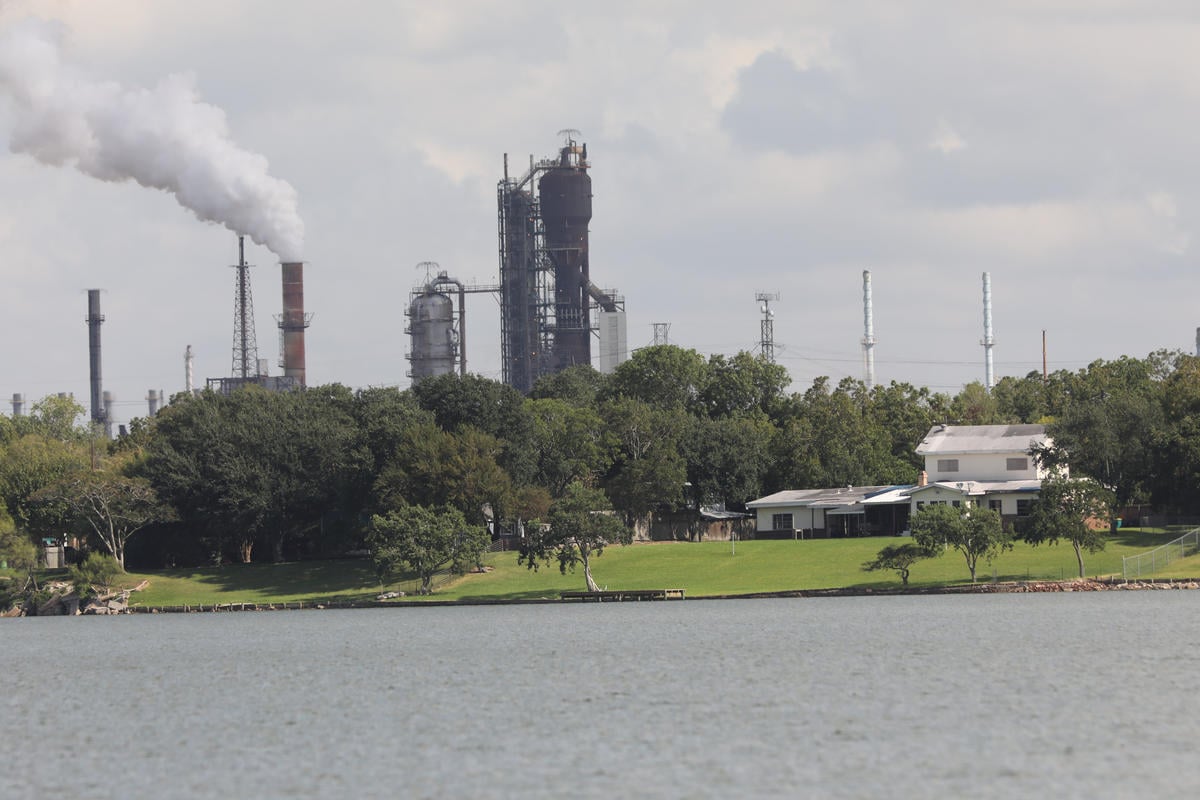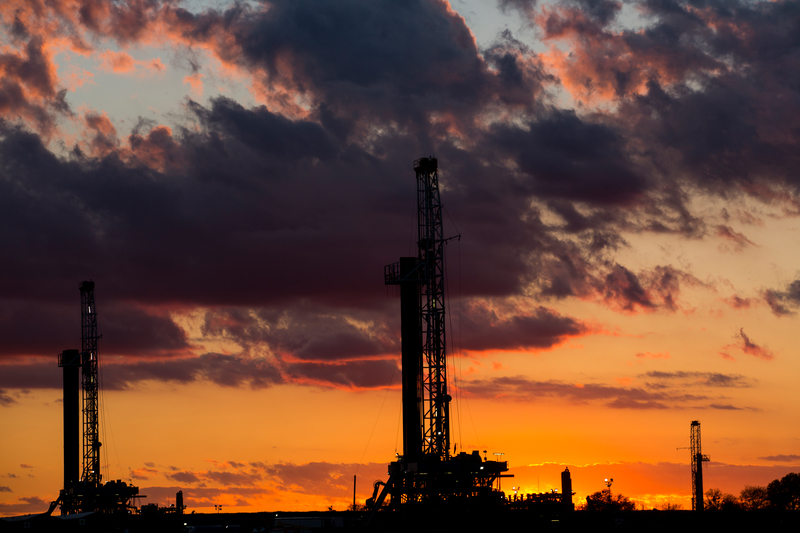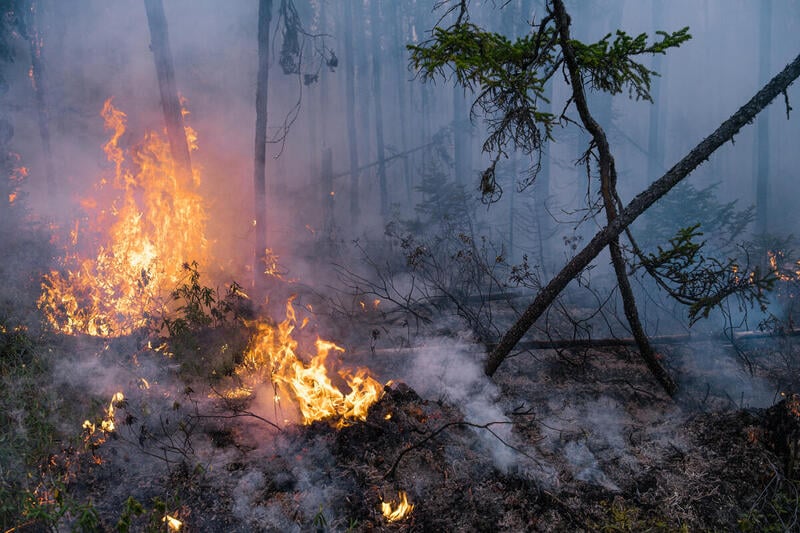Here’s how the oil and gas industry continues to operate under the radar despite the coronavirus.
This is a stressful time to say the least. Everything seems impacted by COVID-19. We are at a point where if I press capital “C” in an email, COVID is automatically suggested to me. While the majority of people are being urged to practice physical distancing and to do everything we can to “flatten the curve” various sectors have been exempt from these rules. While exemptions allowing essential services like hospitals and food production make total sense, others leave me… stunned.
“Man camps”, the work camps housing (mostly male) construction workers building new oil and gas pipelines, often in remote areas and through Indigenous land, are one troubling exception to the general ban on large gatherings. Indigenous leaders have already raised concerns about how ongoing construction puts them at risk.
Despite these risks, construction is still happening on dirty fossil fuel projects like the Trans Mountain Expansion pipeline and the Coastal GasLink fracked gas pipeline in B.C., where 400 workers are still present on the construction site. The Keystone XL pipeline is also going ahead with construction after getting more than a billion dollars in funding from Jason Kenney’s Alberta government. Even after companies have sent a number of workers home, hundreds of workers remain at oil and gas work camps.
How can all of these new projects be considered “essential services” the public needs during the pandemic? After all, building new fossil fuel infrastructure isn’t necessary to maintain existing services, like heating or electricity, to people during this crisis. New Zealand seems to have recognized this, since they did not consider exploratory drilling essential.
Shocked? Me too.
Would you like to expose this situation? Do as my colleagues did and send a letter to the editor of your local paper.
Intimidated and not too sure where to start?
Some shocking facts about the pipeline construction work that is continuing despite the coronavirus:
- As of April 8th, there are 35 reported COVID-19 cases in First Nations and Inuit communities (double compared to last week), and at least one case was confirmed at an LNG worksite in B.C.
- Indigenous communities face unequal determinants of health compared to other people in Canad and so are more vulnerable to COVID-19. Among the social and inequities facing some communities include living in remote locations with fewer health resources, overcrowded housing, a lack of clean water, a higher burden of chronic illnesses (like diabetes), and inadequate food supplies.
- Indigenous Peoples have been unfairly treated and underserved by Canada’s governments during public health crises before. During the current pandemic, concerns have been raised by Indigenous leaders, including by Perry Bellegarde, the National Chief of the Assembly of First Nations.
- Naomi Klein’s best-selling book The Shock Doctrine showed how big business takes advantage of times of crisis for their own benefit. We’re seeing it now as oil companies lobby for government bailouts and as corporate interests try to rush projects along when the general public’s ability to participate in consultation and decisions is limited. (See also this thread).
- The precautionary principle, usually applied in environmental protection cases, holds that it is better to be safe than sorry.
You’ve never written a letter of opinion and you doubt your pen? Here are a few ideas to help you get your juices flowing!
- New pipelines should not fall into the category of “essential services” which are allowed to operate during the pandemic. Exploring for new fossil fuels, and building pipelines, isn’t necessary to maintain existing energy or electricity services during this crisis. They will only harm workers, communities and, in the long run, the climate.
- No double standards. While the rest of Canada is being urged to do everything they can to “flatten the curve” and protect one another, oil and gas pipeline companies operating close to Indigenous communities or on Indigenous lands should be no exception.
- Don’t put workers or Indigneous populations at higher risk of getting sick. Concerns have already been raised about whether it’s possible for safe conditions to be maintained on crowded worksites.
- Listening to science is not optional, whether that’s medical or climate science. We need to listen to credible experts to adequately respond to all current crises equally: public health, climate, biodiversity. We also need to listen to Indigenous knowledge, which has been telling us for years that we need to protect nature to protect our own health.
- Any stimulus or economic recovery plan for 2019 should align with climate action and no one should be left behind. Bail out the workers not the oil giants, the planet not the profits.
- Any institutional racism in our health and business decisions needs to be called out and stopped. Indigenous communities, especially those in rural areas with limited health infrastructure, should be treated just as well, as any other community in Canada.
Looking for a conclusion with teeth? Here are a few ideas that could inspire the end of your opinion letter:
- The health and well-being of First Nation and vulnerables communities be prioritized;
- Adequate economic, social and medical support and resourcing be provided for vulnerable communities to weather the pandemic;
- All new fossil fuel projects and industrial work camps’ construction stops.
And just so you feel EVEN more equipped for this, here are our tips for writing a letter to editor:
- Aiming for about 150 words is a good rule of thumb.
- Try to keep your letter to one main idea – I know this is torture.
- Whatever your letter is about it should be topical (related to something of the day or week, not weeks ago or weeks ahead).
- Clearly state your opinion on this in your own words, in your own voice. Write in a human or conversational tone, not like you’ve just finished reading a blog from an organization on sneaky construction ;P.
- Always check the newspaper’s Contact Us page to make sure your letter meets their requirements.
- It’s a good idea to look at previous days or weeks Letters pages to get an idea of what kinds of letters they tend to publish.
- Keep in mind the audience of the newspaper. Is it conservative? Try using messages and language that will resonate with them while still advancing your opinion or goals.
- The editor may suggest changes, or shorten your letter. That’s normal.
- You might not get a response. That’s also normal. They can’t publish everything. If you don’t hear back in a couple days, send your letter somewhere else.
If you need advice on how to reach out to local media or have questions, email [email protected]




Discussion
No pipeline
This is 2020. We have the technology to make the transition to renewable energy, and diversify in energy investment. Why rely on a dirty sources of energy that is cheap and easy to pad money pockets? COVID has proven the downfall of our over-reliance on unsustainable energy sources, and now tax payers have to bail out oil companies? Seriously, give your head a shake!
Climate, Energy solutions,Consumption,Food, Forests, Health, Oceans, Oil,Indigenous people. The world is busy dealing with Covid 19, while all the negative affects of all listed above are going on behind closed doors. The rich are getting richer, while front workers are denied extra pay..UNBELIEVEABLE. Even nurses, doctors, radiology etc. are not getting extra pay for their time saving people's lives!! Not UNDERSTANDABLE! Also once these patients if lucky leave the hospital the healing begins, affecting your brain, heart, mental capabilities- most people are never the same after. The immigrant workers picking the vegetables, fruit for us to eat, are dying due to poor quality of living environments. There should be health workers out in the areas checking on the immigrants and their living conditons!! No pipeline-agreed. Bail out OIL Companies...try getting the big time millionares to start paying taxes!!